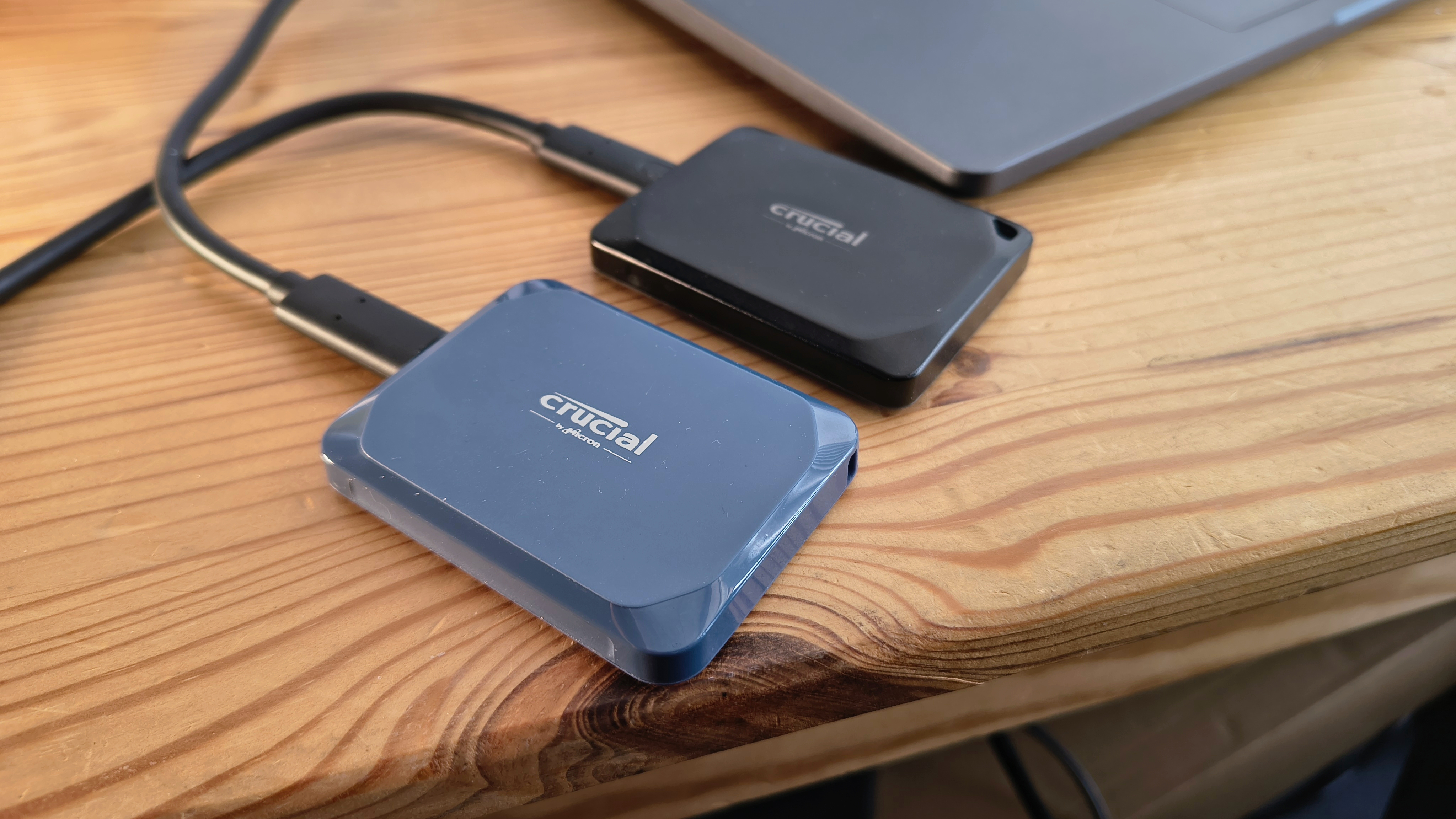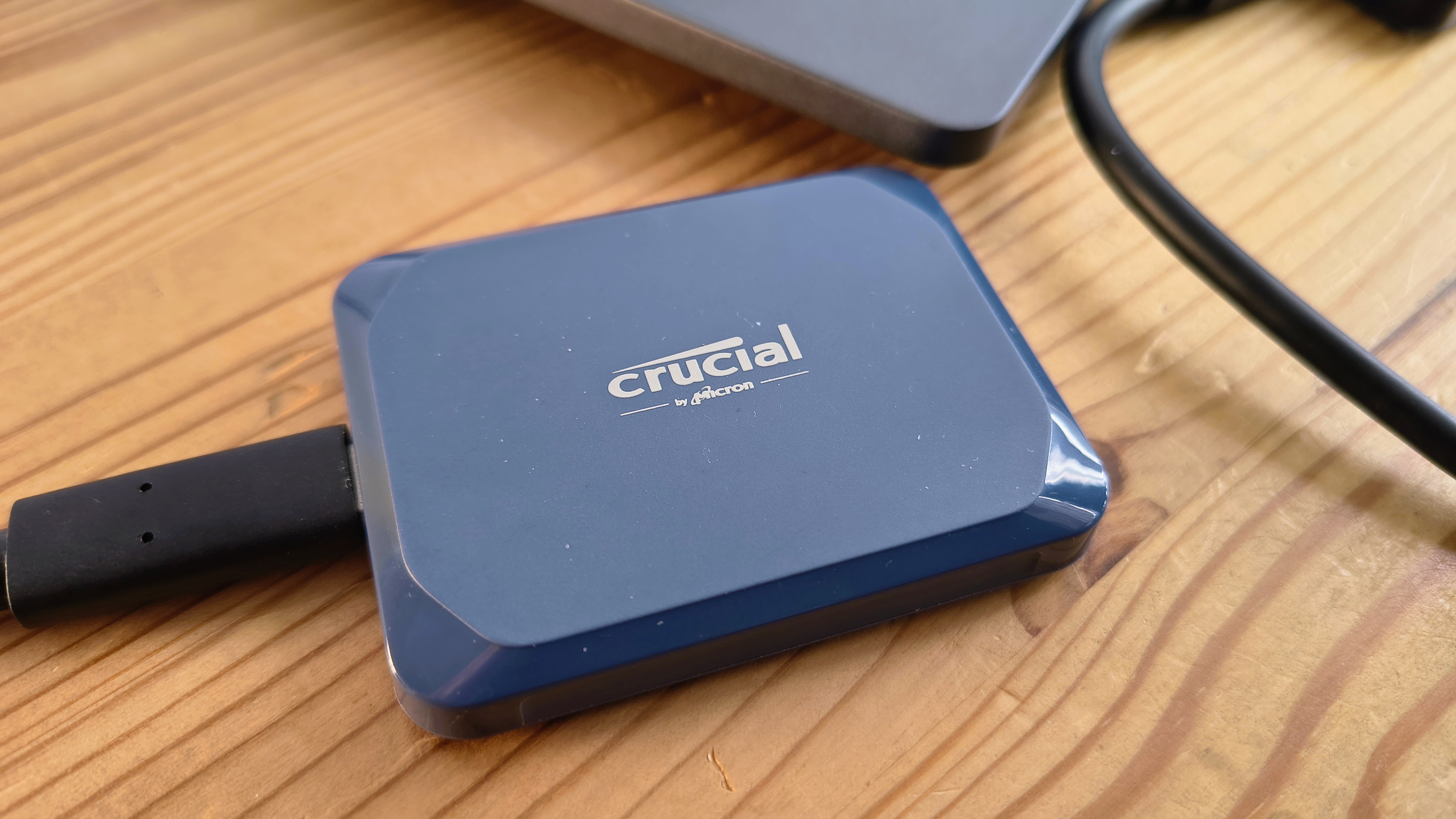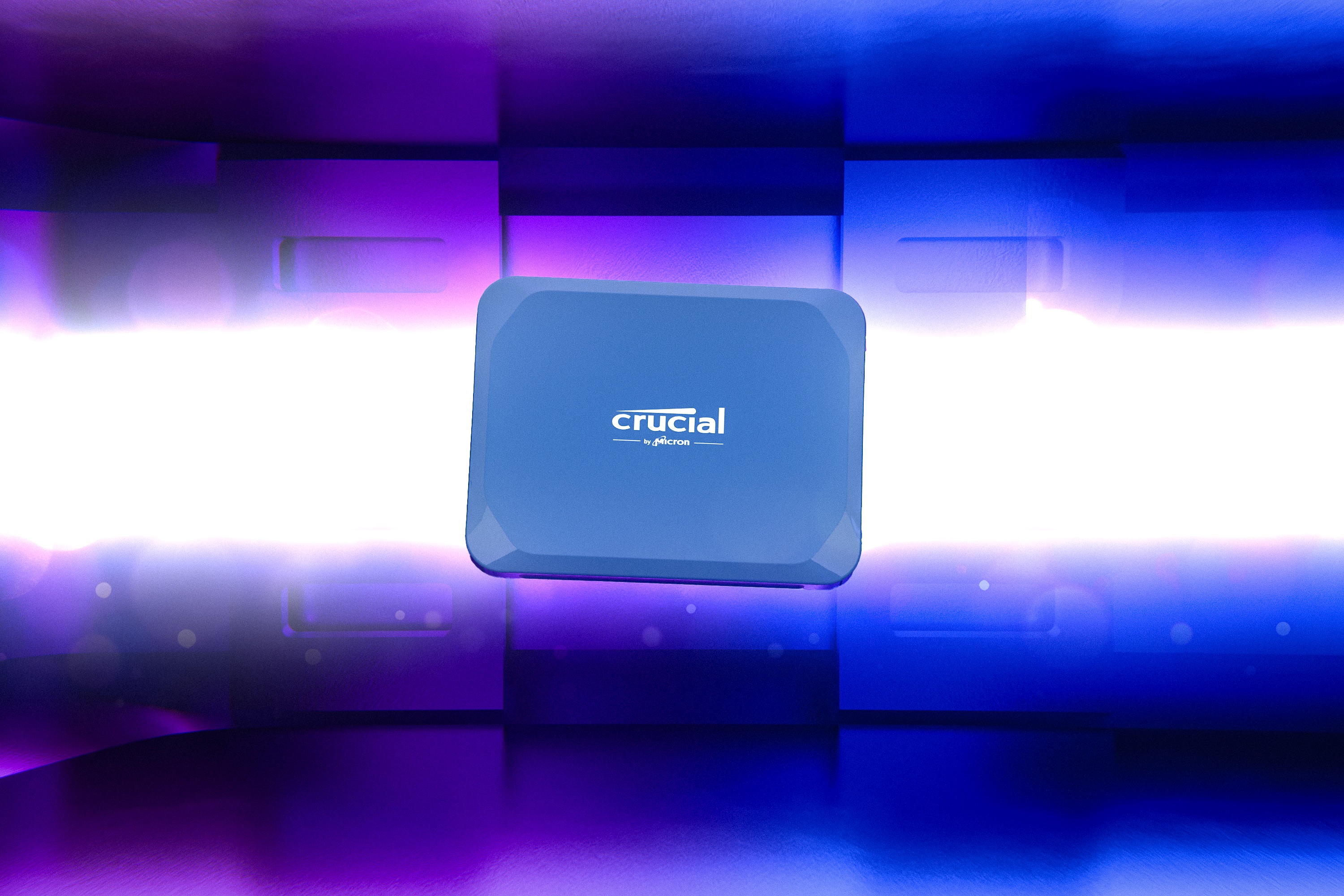Why you can trust TechRadar
We dedicated countless hours to testing each product and service we review, ensuring that you’re getting the best options available. Learn more about our testing process.
Crucial X10: 30-second overview
Although not the first SSD from Crucial, the launch of the X8 in 2019 was a significant milestone, leading to a highly successful series of products.
This was soon followed by the more budget-friendly X6, and then the enhanced X9 Pro and X10 Pro released in 2023, which are regarded as top choices for portable storage solutions.
Due to its naming, many might overlook the new X10 (non-pro) model just like the X9. Essentially, these are cost-effective alternatives designed to help Crucial (Micron) manufacture popular products more affordably while also tackling profit challenges in today’s economy.
The newly introduced X10 is made from plastic instead of metal, but its flash memory performs on par with—or even surpasses—the X10 Pro.
Additionally, it’s sturdier, featuring an improved IP rating of IP65 compared to the IP55 of the X10 Pro. However, while it gains in durability, it lacks the hardware encryption found in the X10 Pro.
Notably, the X10 significantly outpaces the X10 Pro regarding capacity options, offering 6TB and 8TB variants, whereas both the X10 Pro and X9 Pro are capped at 4TB.
In summary, unless hardware encryption is a must-have for you, the X10 is preferable over the X10 Pro and X9 Pro, especially given its higher capacity choices. Thus, Crucial certainly deserves a spot on our best portable SSD list with the X10.

Crucial X10: Pricing and availability
- How much does it cost? Starting from $99.99/£109.99/€149.26
- When is it available? It is currently on sale
- Where can you purchase it? Available directly from Crucial or through online sites like Amazon.
Historically, Crucial’s SSDs were much pricier in Europe than in the U.S., with the X10 Pro being 40% more expensive for European customers in 2023.
Even though the price per TB is generally better in the U.S., the price gap has narrowed, partly due to the weakening US dollar.
It’s also interesting to note that, at times, the X10 Pro is sold for only slightly more than the X10 of the same capacity, and in some cases, they might even share the same price tag.
As the X10 is offered in five capacities, I opted to showcase three regional prices instead of listing every option here, presenting the prices as found on Amazon in the table below.
X10 Capacities | USD | GBP | EUR |
|---|---|---|---|
1TB | $99.99 | £109.99 | €149.26 |
2TB | $162.99 | £159.99 | €270.64 |
4TB | $246.99 | £289.99 | €309.99 |
6TB | $559.99 | £355.99 | €409.99 |
8TB | $439.99 | £494.99 | €559.99 |
Interestingly, the 8TB variant in the US is priced lower than the 6TB version. This is due to Amazon’s promotion which has reduced the retail price from $779.99 to just $439.99.
This is a fantastic offer, and when compared to the initial prices of the X10 Pro, the X10 has significantly better pricing across the range.
In comparison with other options, the X10 is less expensive than the SanDisk Extreme PRO Portable SSD, with the 2TB version generally priced around £182 in the UK and $196 in the USA. It also undercuts the Samsung T9 and Lexar SL500 Portable SSDs.
The only competitors that offer lower prices are the Kingston XS2000, which caps out at 2TB, the ADATA SE880, which has a maximum capacity of 4TB, and the Netac Extreme Portable SSD, also limited to 2TB.
Generally, these lower-priced alternatives do not have the same durability as the X10, and none of them come in sizes larger than 4TB.

Crucial X10: Specifications
Model Number | CT2000X10SSD9 |
|---|---|
Available Capacities | 1TB/2TB/4TB/6TB/8TB |
Tested Capacity | 2TB |
Sequential Performance (Read/Write) | 4056/3630 MB/s |
Connection Type | USB 3.2 Gen 2 or Gen 1 via USB-C |
Durability Rating | IP65 |
Encryption Type | Software only |
Dimensions | 65 x 50 x 9.91 mm (WxHxD) |
Weight | 42g |
Power Supply | USB-powered |
Warranty Period | 3-year limited warranty |
Crucial X10: Design Features
- Enhanced X10
- Only USB-C interface
- Rated IP65 for water and dust resistance
The launch of the X10 Pro and X9 Pro models resonated well with tech consumers. Compact and easily portable, the metal casing of the X10 Pro felt durable and offered good performance at a fair price, contributing to its strong market presence.
Despite an unusual launch timeline, where the Pro versions debuted two years ago, the newer non-Pro versions have now been released, providing additional options for Crucial customers.
The X10 maintains the same dimensions but has a slightly different design from the X10 Pro; it opts for plastic instead of metal, making it lighter and more suited for casual transport in a laptop bag.
The plastic X10 features a more rounded design, as opposed to the sharper angles of its predecessor, and includes a hole for attaching a lanyard.
The corner now extends through the side instead of going from front to back. The X9 Pro and X10 Pro featured a tiny activity LED within the hole, which is absent in the X10.
As with all of Crucial’s current SSDs, it includes a rather short 20cm USB-C to USB-C cable, and users with only USB-A ports will have to purchase or find an adapter.
Considering the hefty price tag of the 8TB model, it’s quite disappointing that Crucial doesn’t provide an adapter, which would cost them mere cents. The X8 model included one as I remember.
A less obvious difference is that the X10 boasts an IP65 rating, whereas the X10 Pro has an IP55 rating.
The variations between these two ratings are slight, but it’s clear that IP65 offers superior overall protection. It shields better against dust intrusion and has enhanced water resistance, though neither rating ensures it can be submerged in water.

I found it amusing that the X10 Pro was designed to endure a fall of 7.5 feet or 2 meters onto a carpet.
Maybe I’m being too harsh, but I believe any SSD devoid of moving parts and weighing under 50g should handle being accidentally dropped onto carpeting from nearly any height.
Interestingly, the X10 has had its height durability increased to 3m, but the warranty has been shortened from five years in the Pro models to just three for the X10. I doubt these changes are linked, but it would be quite a coincidence if they were.
On the whole, the X10 seems to reflect cost-cutting decisions, yet it retains most essential features, and with a lower price tag, the customer may benefit just as much as the manufacturer.

Crucial X10: Performance
- Decent performance
- Excludes USB 4 support
Bench | Test | Crucial X10 2TB | Corsair EX400U 2TB |
|---|---|---|---|
CrystalDiskMark 8.05 | Default Read | 2003 MB/s | 4056 MB/s |
| Row 1 – Cell 0 | Default Write | 2002 MB/s | 3630 MB/s |
| Row 2 – Cell 0 | Real World Read | 1810 MB/s | 2303 MB/s |
| Row 3 – Cell 0 | Real World Write | 1812 MB/s | 3269 MB/s |
AJA System Test 64GB | Read | 1803 MB/s | 2827 MB/s |
| Row 5 – Cell 0 | Write | 1841 MB/s | 2638 MB/s |
AS SSD | Read | 1804 | |
| Row 7 – Cell 0 | Write | 1786 MB/s | 3197 MB/s |
ATTO | Read | 1870 MB/s | 3780 MB/s |
| Row 9 – Cell 0 | Write | 1870 MB/s | 3470 MB/s |
PCMark Data Drive Bench | Score | 1159 | 2028 |
While I felt tempted to use the data from my reviews of the X9 Pro and X10 Pro for comparisons with the X10, I decided against it due to Microsoft’s efforts to hinder Windows 11 usability and the numerous benchmark changes.
Crucial only provided the 2TB version for review, but they claim that all models perform similarly. It’s important to mention that flash storage has a lifespan indicated by total bytes written (TBW), which Crucial does not provide for its external SSD offerings. Nevertheless, we can assume that the TBW for the 8TB model is eight times that of the 1TB version.
Crucial specifies this drive has read speeds of 2200MB/s and write speeds of 2000MB/s, which is double the speeds of the X9 Pro and X8 that feature USB 3.2 Gen 2 interfaces. Although it matches the X10 Pro, it does not have the hardware encryption found in that model, justifying the need for Crucial to continue offering the X10 Pro.
The best performance results indicate that this drive surpasses the X10 Pro in sustaining write speeds. During demanding tests like AS SSD and AJA, the X10 can maintain speeds around 1790MB/s. On the other hand, the X10 Pro only reached 1658MB/s on AJA and 1688MB/s during CrystalDiskMark RealWorld tests.
It could have been great if the X10 had the capability to fully utilize USB4 at 20 Gbps alongside Gen 2×2 support. Unfortunately, this specification seems absent. Nonetheless, I achieved the full 20 Gbps speed using a recent Dell laptop that advertised USB4 capabilities, possibly due to a USB 3.2 2×2 controller included in that setup.
I suspect that true USB4 performance may be reserved for future models like the X11 or X12. It’s surprising that Crucial assumed many users have USB 3.2 Gen 2×2 ports, while in reality, not many do.
If you have a Gen 2×2 port, this drive functions well. However, for USB4 setups, alternatives like the Corsair EX400U offer faster file transfer speeds. The 2TB EX400U retails for around $190, presenting a higher cost, and the Corsair model only offers a maximum of 4TB.
Crucial X10: Final verdict
I genuinely enjoy using my Crucial X series drives, including the X8, on a daily basis.
The X10 may not reach the iconic status of the X10 Pro, but it presents enough style and functionality to contemplate if you possess USB 3.2 Gen 2×2 ports.
If you own a USB4 or Thunderbolt port, or require hardware encryption, this drive may not suit your needs.
I hope Crucial has an X11 or X12 model in development, as the X10 lacks significant breakthroughs aside from its larger 6TB and 8TB options.
Should I buy the Crucial X10?
Value | More budget-friendly than the previous model at launch | 4 / 5 |
Design | Streamlined, plastic design compared to the X10 Pro | 4 / 5 |
Performance | Performance matches or exceeds the X10 Pro, but lacks encryption | 4 / 5 |
Overall | Offers durability and larger storage capacity options | 4 / 5 |

Buy it if…
Don’t buy it if…
Also consider
For additional options, we’ve reviewed the fastest external SSDs available right now.


